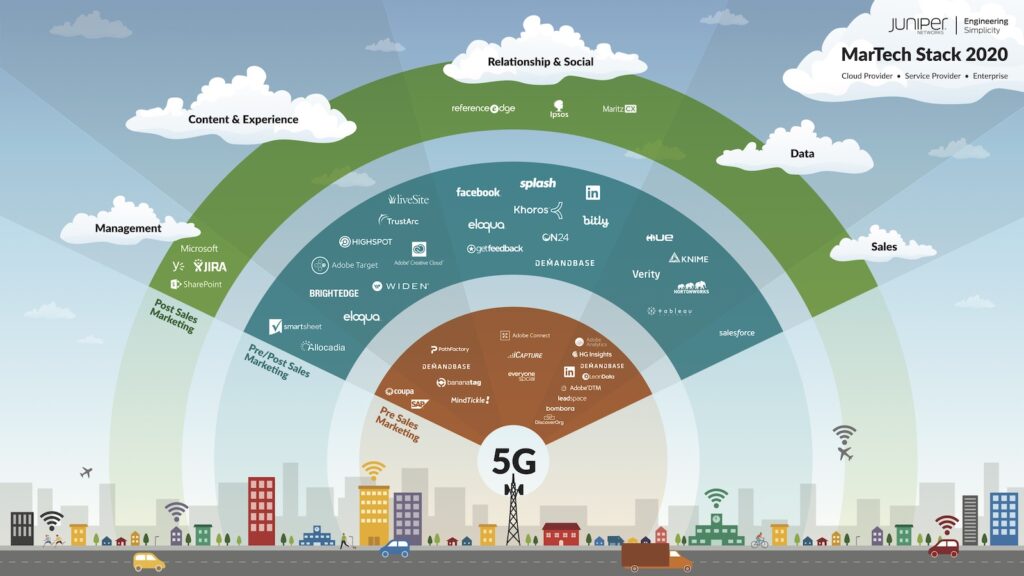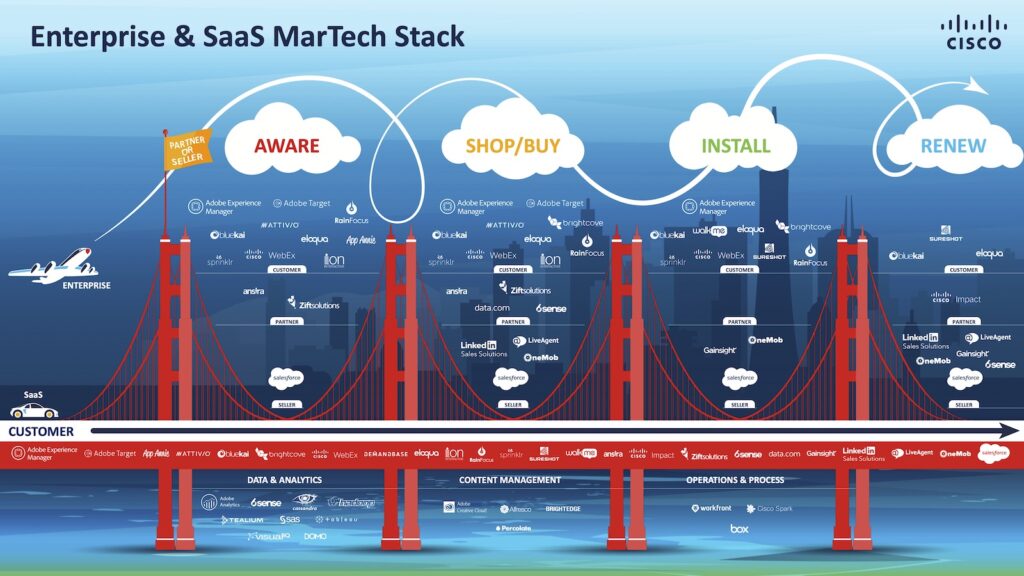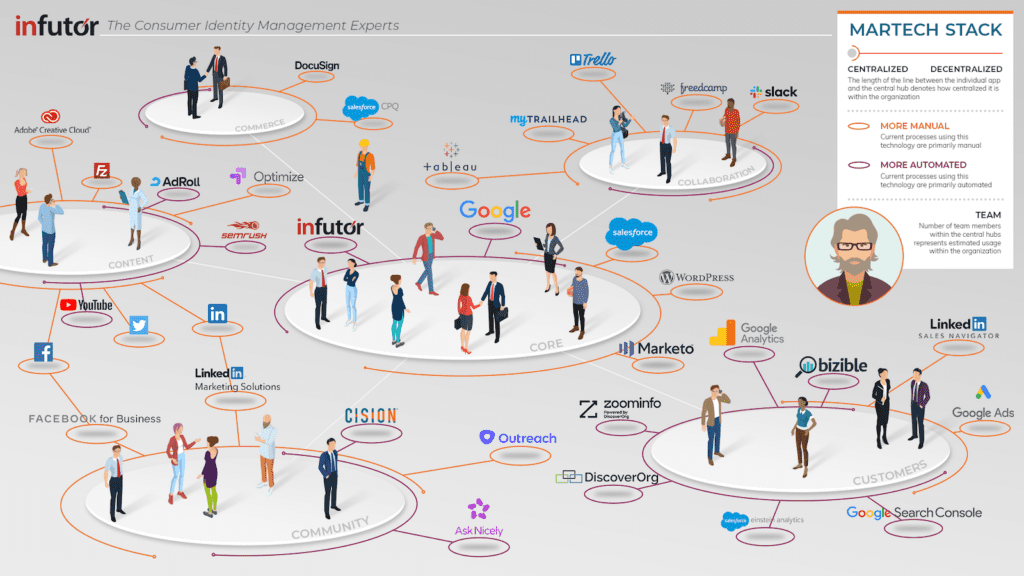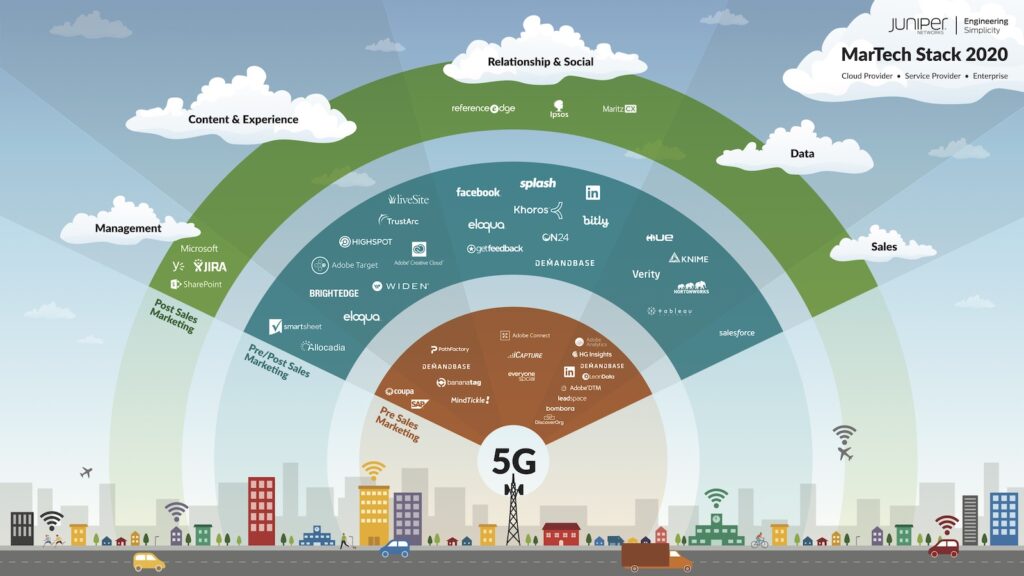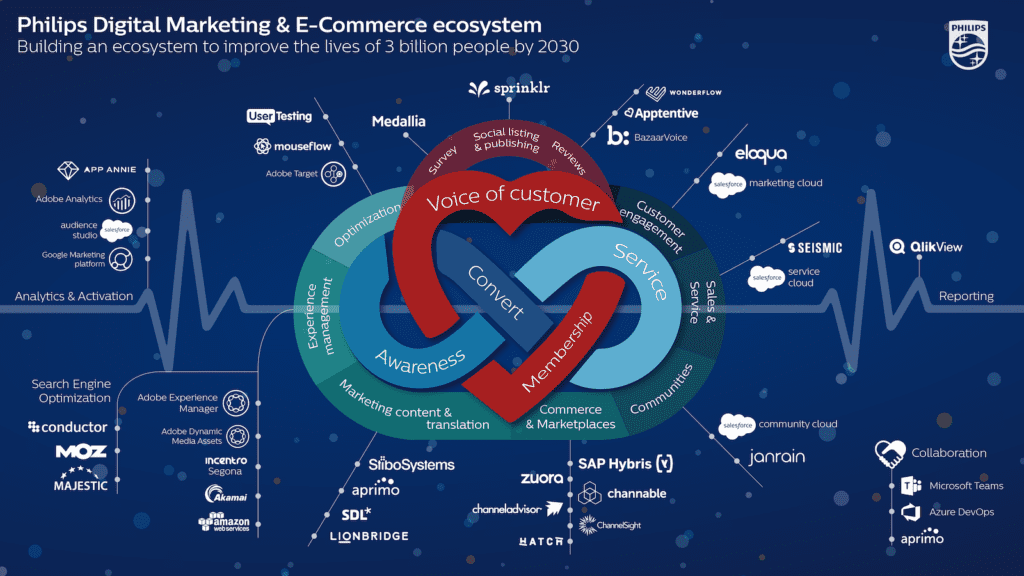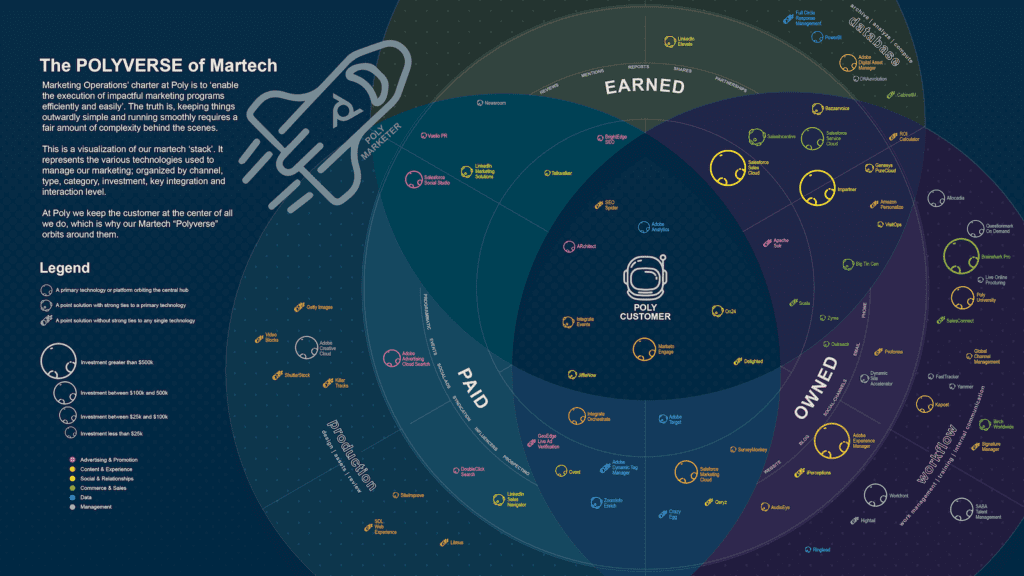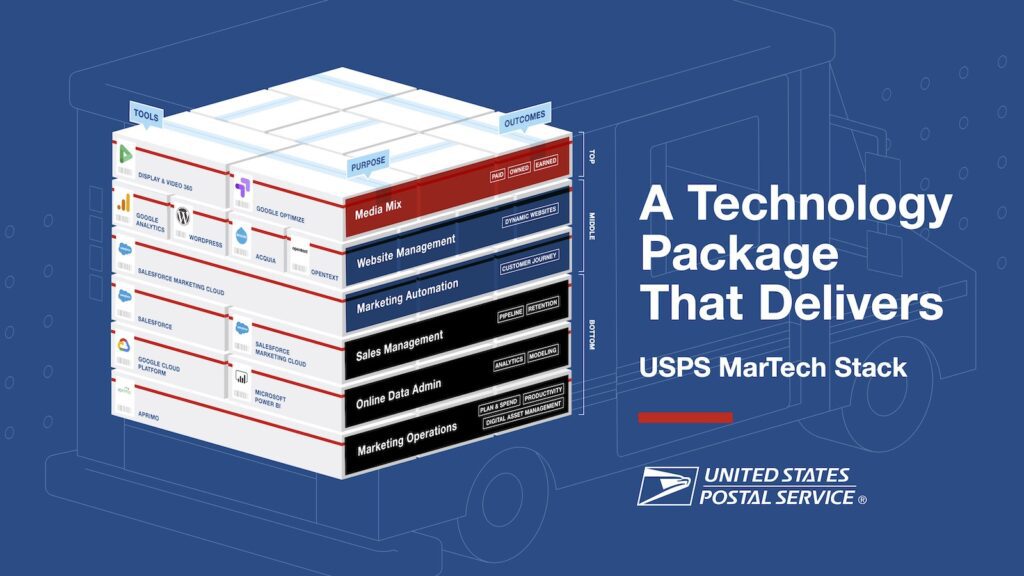Every year, MarTech hosts The Stackie awards where marketers submit one slide that illustrates how their entire marketing technology stack fits together.
Usually, the awards are part of the Annual MarTech Conference in April, but that didn’t happen this year due to COVID-19. The winners for 2020 will be announced October 26th in Boston at the MarTech East 2020 Opening Reception.
Even though submission is still open until September, here are a few submitted already submitted this year that are worth taking a closer look at. It might give you a new way of thinking about how your organization’s martech fits together. Who knows, maybe you will even want to design and submit your stack into next year’s competition.
7 New Stacks to Checkout
I suggest looking as the images as large as possible.
Cisco Marketing Stack
This year, multinational technology conglomerate Cisco submitted a visual representation of a customer’s journey from awareness through renewal, with the different technologies used along the way. Tools are broken up by the that category: Aware, Shop/Buy, Install, Renew. Technologies along the bridge are used throughout the entire journey.
Infutor Marketing Stack
Infutor is a customer identity management expert, helping their clients make more informed decisions about their customers. Infutor organizes their stack into 6 hubs: Commerce, Collaboration, Core, Content, Community, Customers.
Tools associated with hubs that have more people in them, are used by more employees.
Orange line spokes refers to a tool that is used manually. Dark red line spokes indicate automated use of the tool.
Juniper Networks Marketing Stack
Juniper Networks develops and sells networking products; thus their stack image is fitting, a 5G tower, transmitting all of their marketing technology.
Tools are broken up by application:
- Pre-Sales Marketing
- Pre/Post Sales Marketing
- Post-Sales Marketing
They are also grouped by category:
- Management
- Content & Experience
- Relationship & Social
- Data
- Sales
Philips Marketing Stack
Electronics conglomerate Philips put together a beautiful representation of their martech stack with the voice of the customer at the literal heart in the center.
The customer life-cycle stages of awareness, convert, and service, form an infinity symbol, signifying the indefinite nature of the relationship.
Along the lifecycle, different technologies provide value through:
- Optimization
- Experience management
- Marketing content & translation
- Commerce & marketplaces
- Communities
- Sales & service
- Customer engagement
- Reporting
Poly Marketing Stack
Poly is an American electronics company mainly producing audio communications equipment. Their stack is out of this galaxy, with the customer in the center of their stack’s universe.
Technologies are separated based upon channel; paid, owned, and earned. Capabilities are broken down further into database, production, and workflow.
There are three different shapes next to each technology reflecting a primary technology/platform orbiting the central hub; a point solution with strong ties to a primary technology; or a point solution without strong ties to any single technology.
Size of the shape corresponds to the amount of the investment and color is category.
Sargento Marketing Stack
Sargento cheese breaks their martech into five categories with a picture that is very fitting:
- Plan
- Create
- Activate
- Measure
- Share
For each stage, they include an estimate of the relative engagement of different teams in that stage: marketing, insights, creative, omnichannel, and sales.
It’s interesting to see the tools in each of these stages. You would expect to see many products in any marketing stack, however, there are many that are much more specific to Sargento’s market and channel structure like Instacart and Publix.
USPS Marketing Stack
The final new stack is from the US Postal Service (USPS). According to Scott Brinker, this is the first government submission ever. It pleasantly surprises me to see this level of creativity from a government agency.
The illustration is broken out by the tool, it’s purpose, and the outcome of using the tool. From top to bottom, there are tools for Marketing Operations, Online Data Admin, Sales Management, Marketing Automation, Website Management and Mix Media.
Ideas for Your Own Stack
I hope you found the technology stacks interesting and useful for thinking about the structure of your own stack. If you are looking for help with your martech roadmap or a system integrator, we would love to discuss how we can help. Submit your information in the form below to connect.
[wpforms id=”4170″]
If you want to learn more, checkout The Stackies Website.
Thank you to Third Door Media and MarTech for collecting and sharing the new submissions.
